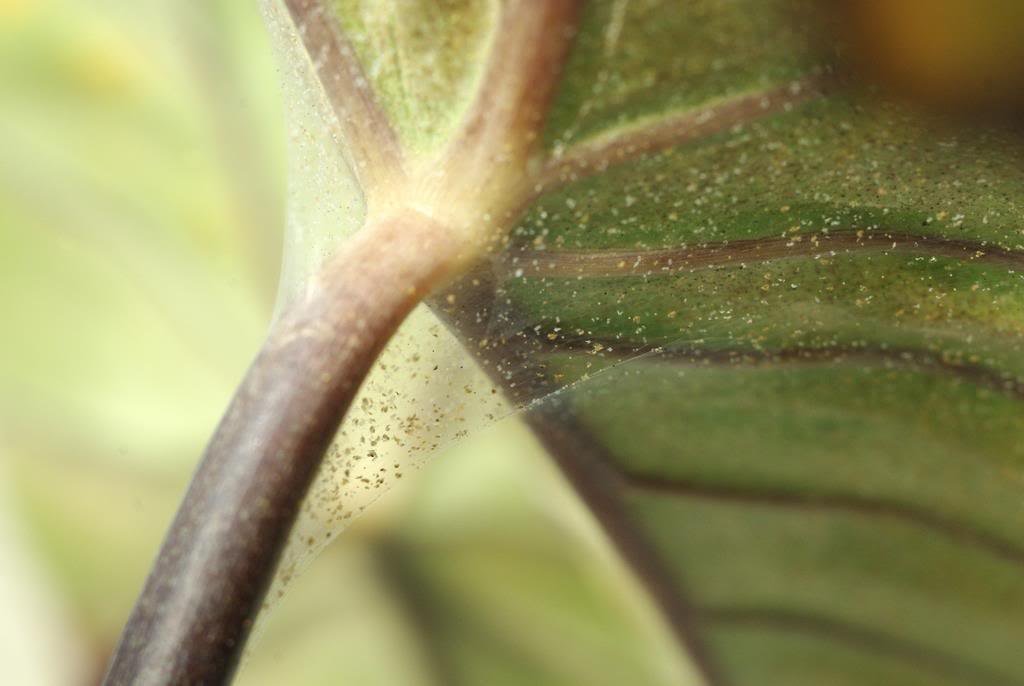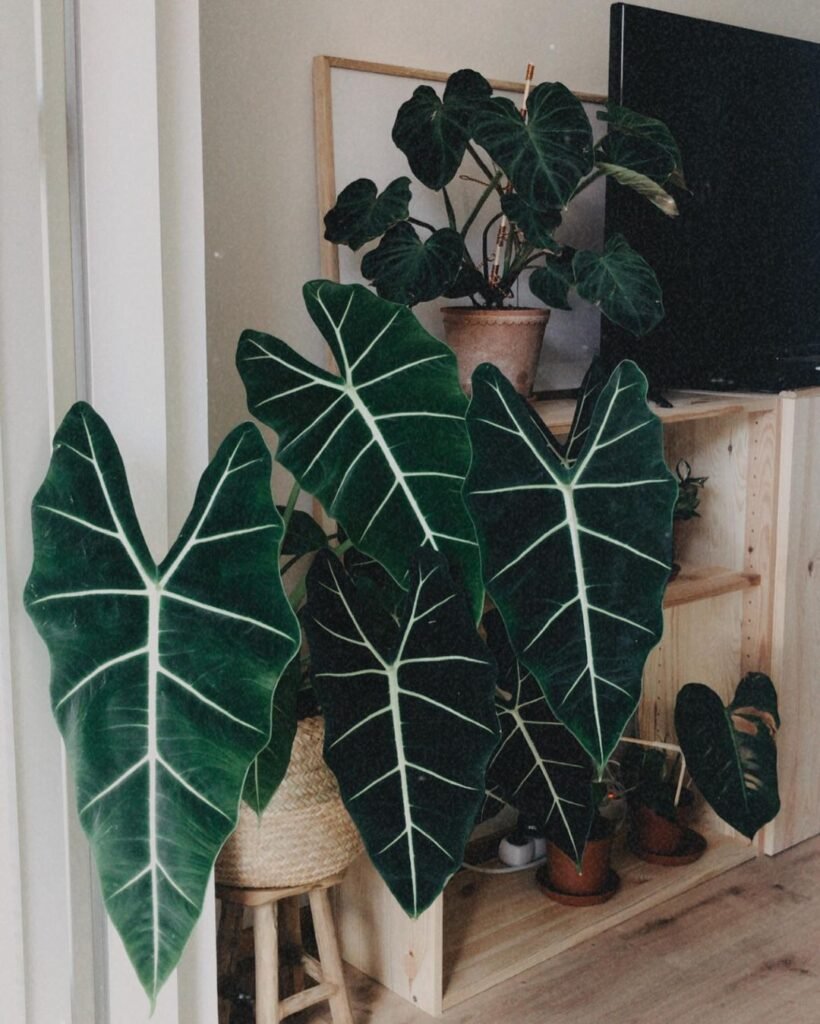Learn how to grow and care for stunning elephant ear plants with this comprehensive guide. Discover tips for planting, watering, fertilizing, and overwintering these tropical beauties, as well as solutions for common pests and diseases. Explore popular varieties and their versatile uses in gardens and beyond.
If you’re looking to add a touch of tropical flair to your garden or outdoor space, elephant ear plants are an excellent choice. These stunning plants, also known as taro or colocasia, are prized for their large, heart-shaped leaves that come in a variety of vibrant colors and patterns. While elephant ears may look exotic, they’re surprisingly easy to grow and care for, making them a great addition for both experienced and beginner gardeners alike. In this comprehensive guide, we’ll cover everything you need to know to successfully cultivate these tropical beauties.
Understanding Elephant Ear Plants

Elephant ear plants are herbaceous perennials that belong to the Araceae family, which also includes philodendrons and anthuriums. They’re native to tropical regions of Asia and the Pacific Islands, but they’ve become popular ornamental plants in gardens around the world.
There are two main types of elephant ear plants:
- Colocasia: This genus includes the classic elephant ear varieties with large, heart-shaped leaves that can grow up to 6 feet tall and wide. Popular colocasia cultivars include ‘Black Magic,’ ‘Illustris,’ and ‘Fontanesii.’
- Alocasia: These elephant ear plants are known for their distinctively textured, deeply lobed leaves and often feature stunning colors like black, purple, or silver. Popular alocasia varieties include ‘Amazonica,’ ‘Polly,’ and ‘Frydek.’
Both colocasia and alocasia make excellent statement plants in gardens, containers, or as houseplants in bright, sunny locations.
Planting Elephant Ear Plants
One of the best things about elephant ear plants is their versatility when it comes to planting. They can be grown in the ground, raised beds, or containers, making them suitable for a wide range of garden spaces.
In-Ground Planting:

- Choose a spot with full sun to partial shade and well-draining soil.
- Amend the soil with compost or well-rotted manure to improve drainage and nutrient content.
- Plant the tubers or rhizomes horizontally, about 2-4 inches deep, and space them 2-3 feet apart.
- Water thoroughly after planting.
Container Planting:

- Use a large pot or container with drainage holes, at least 18-24 inches wide and deep.
- Fill the container with a well-draining potting mix formulated for tropical plants.
- Plant the tubers or rhizomes horizontally, 2-4 inches deep, and space them according to the mature size of the variety.
- Water thoroughly after planting.
When planting elephant ears, it’s important to keep in mind their eventual size. Some colocasia varieties can grow up to 6 feet tall and wide, while alocasia tend to be more compact, reaching 3-4 feet in height and width.
Caring for Elephant Ear Plants
Once your elephant ear plants are established, they require relatively low maintenance, but there are a few key care requirements to keep in mind.
Watering:

- Elephant ears have high water needs, especially during the active growing season (spring and summer).
- Water deeply and consistently, aiming to keep the soil evenly moist but not waterlogged.
- Avoid letting the soil dry out completely, as this can cause the leaves to wilt and the plant to go dormant.
Fertilizing:

- Elephant ears are heavy feeders and benefit from regular fertilization.
- Use a balanced, water-soluble fertilizer formulated for tropical plants, following the manufacturer’s instructions for application rates and frequency.
- Alternatively, you can use a slow-release fertilizer or compost tea.
Temperature and Light:

- Elephant ears thrive in warm to hot temperatures, ideally between 70-90°F (21-32°C).
- They prefer full sun to partial shade, with at least 6 hours of direct sunlight per day.
- In very hot climates, afternoon shade may be beneficial to prevent leaf scorch.
Pruning and Maintenance:

- Remove any dead or damaged leaves by cutting them off at the base of the plant.
- In the fall, after the first frost, cut back the entire plant to the ground, leaving a few inches of stem.
- Mulch around the base of the plant to insulate the tubers or rhizomes during the winter months.
Overwintering Elephant Ears:

- In cold climates (USDA Hardiness Zones 7 and below), elephant ear plants must be overwintered indoors or treated as annuals.
- Dig up the tubers or rhizomes in the fall, after the first frost, and store them in a cool, dry location until the following spring.
- Alternatively, you can bring container-grown plants indoors and allow them to go dormant in a cool, dark area.
Common Pests and Diseases
Like many tropical plants, elephant ears can be susceptible to certain pests and diseases, but most issues are easily preventable with proper care and maintenance.
Pests:

- Aphids, mealybugs, and spider mites are common pests that can infest elephant ear plants.
- Regularly inspect your plants and treat infestations promptly with insecticidal soap or neem oil.
Diseases:

- Leaf spot and blight are fungal diseases that can affect elephant ears, causing brown or black spots on the leaves.
- Proper spacing, good air circulation, and avoiding overhead watering can help prevent these issues.
- Remove and destroy any affected leaves or plant parts to prevent further spread.
Root Rot:

- Root rot is a common problem caused by overwatering or poorly draining soil.
- Ensure your elephant ears have well-draining soil and avoid letting them sit in standing water.
- If root rot occurs, you may need to dig up the plant, remove any affected roots, and replant in fresh soil.
By providing the right growing conditions and staying vigilant for potential issues, you can easily keep your elephant ear plants healthy and thriving.
Varieties and Uses of Elephant Ear Plants
With their wide range of sizes, colors, and leaf patterns, elephant ear plants offer incredible versatility for landscaping and gardening purposes. Here are some popular varieties and their potential uses:
Colocasia Varieties:

- ‘Black Magic’: Dark purple-black leaves, grows 4-6 feet tall and wide. Great for adding drama to borders or containers.
- ‘Illustris’: Striking green leaves with black veins and stems, 3-5 feet tall and wide. Perfect for adding texture and contrast.
- ‘Fontanesii’: Glossy, black-purple leaves, 2-4 feet tall and wide. Ideal for containers or small garden spaces.
Alocasia Varieties:

- ‘Amazonica’: Large, arrow-shaped leaves with distinct veining, 3-6 feet tall. Makes an impressive focal point in gardens or containers.
- ‘Polly’: Compact plant with deep purple-black leaves and white veins, 2-3 feet tall. Excellent for containers or mixed planters.
- ‘Frydek’: Unique silver-green leaves with dark veins, 2-4 feet tall. Perfect for adding contrast and interest.
In addition to their ornamental value, elephant ear plants have a long history of use in various cultures:
- The tubers and leaves of colocasia varieties are edible and commonly used in tropical cuisines, such as Hawaiian and Polynesian dishes.
- Alocasia leaves were traditionally used for wrapping and storing food in certain Pacific Island cultures.
- Both colocasia and alocasia have been used in traditional medicine for their potential antimicrobial and anti-inflammatory properties.
Whether you’re looking to create a bold, tropical statement in your garden or add a touch of exotic flair to your outdoor living space, elephant ear plants offer a range of stunning options to suit your needs.
With their captivating foliage, easy care requirements, and diverse uses, elephant ear plants are a must-have for anyone looking to bring a taste of the tropics to their garden or home. By following the care guidelines outlined in this guide, you’ll be well on your way to cultivating these beautiful, larger-than-life plants and enjoying their lush, tropical presence for years to come.
Pingback: 12 Stunning flowers that start with X | ‘X’ Blooms to Grow in Your Garden
Pingback: Best companion plants for celery – Guide Gardener Sch
Pingback: Electroculture Gardening: Boosting Plant Growth
Pingback: Benefits of Companion Planting: A Guide for Gardeners
Pingback: How to Grow and Care for Spider Mums - Gardener's school
Pingback: Plant, Grow and Care for Lupine Flowers: A Comprehensive Guide
Pingback: Calathea Roseopicta Plant Care Guide : How to Grow This Beautiful Indoor Plant